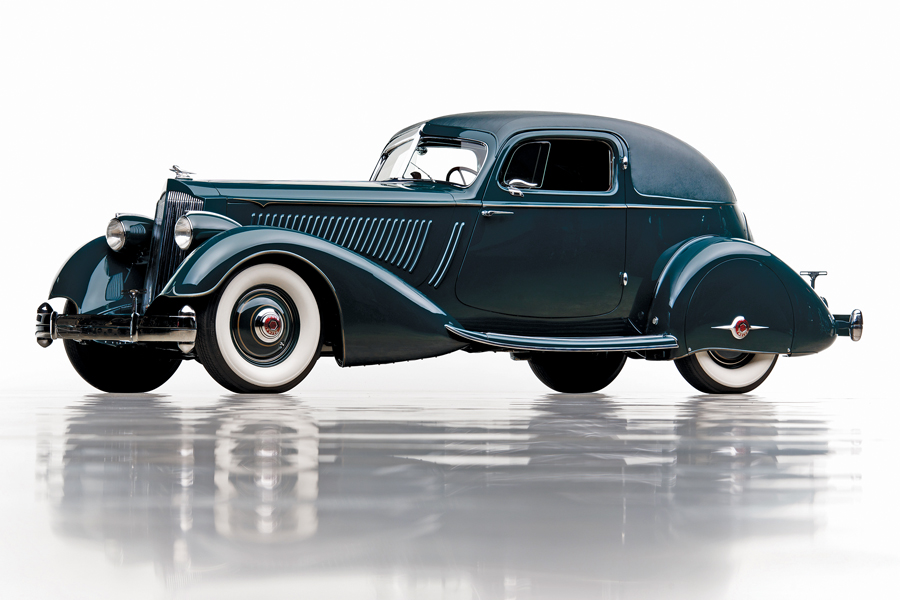No chassis number available
Packard’s most beautiful automobiles of the 1930s were arguably produced as part of the Eleventh Series, and they boasted the first gentle hints of streamlining, such as a slightly angled radiator shell, more deeply skirted fenders, and vee’d headlamp lenses. The 12-cylinder models of this series were the ultimate Packards, and the ultimate of the ultimate were the versions designed by Alexis de Sakhnoffsky and built by LeBaron of Detroit. These scarce cars featured the latest in aerodynamics, including separate, sensuously rounded pontoon fenders, curved running boards blended into the body, and tapered tails. They were the hottest thing to come from East Grand Boulevard in years.
Two of the LeBaron styles, the Runabout Speedster and the sport coupe, were given their own unique, sporty chassis, which ended up being a shortened 136-inch wheelbase variant of the Twelve platform, known as the 1106. The chassis was mounted on a sturdy Standard Eight frame, and it utilized the V12 engine. The sport coupe, with its fastback roofline inspired by the Mercedes-Benz Autobahn-Kurier, was the real shape of things to come, so it is no wonder that Packard tried to claim credit for it; the bodies may have been built by LeBaron, but they were attributed to the Packard Custom Body Division.

